3D Cameras (Video stereography)
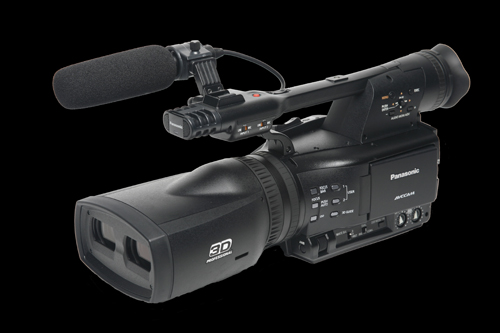 Panasonic AG-3DA1 (2010)
Panasonic AG-3DA1 (2010)
Original retail price of 21,000
The 3DA1 was the first all-in-one HD 3D camcorder released to the market. This is still my best 3D camera for filming. There are a few drawbacks as it's an early model that never had a followup model released. What makes this a professional 3D rig is the dual HD-SDI outputs for using external recorders. I have recently acquired two recording units, a shoulder mount and 12-volt battery so I can shoot near-lossless HD. It is still 1080 line and 8-bit but it can produce very good images even with internal AVCHD compression.
Drawbacks: The 3DA1 lacks almost any auto fuctions. No auto iris, no auto focus. Those are my two biggest complaints on this camera. Also, there is no LPCM recording internally for audio. You get Dolby Digital 2.0 and that's it. However, since I'm moving to external recording I can now get PCM audio thru the SDI outputs. Video can be recorded with external recording up to 280mbps I-frame or Long Gop MPEG-2. Another drawback is the camera has unusually narrow field of view. It's about 47mm and that also effects the minimum working distance at about 6-8 feet. I have the wide angle kit for it by Zunow and they are nice lenses which convert it to approx 28mm. This brings the minimum working distance down to 2 feet approx.
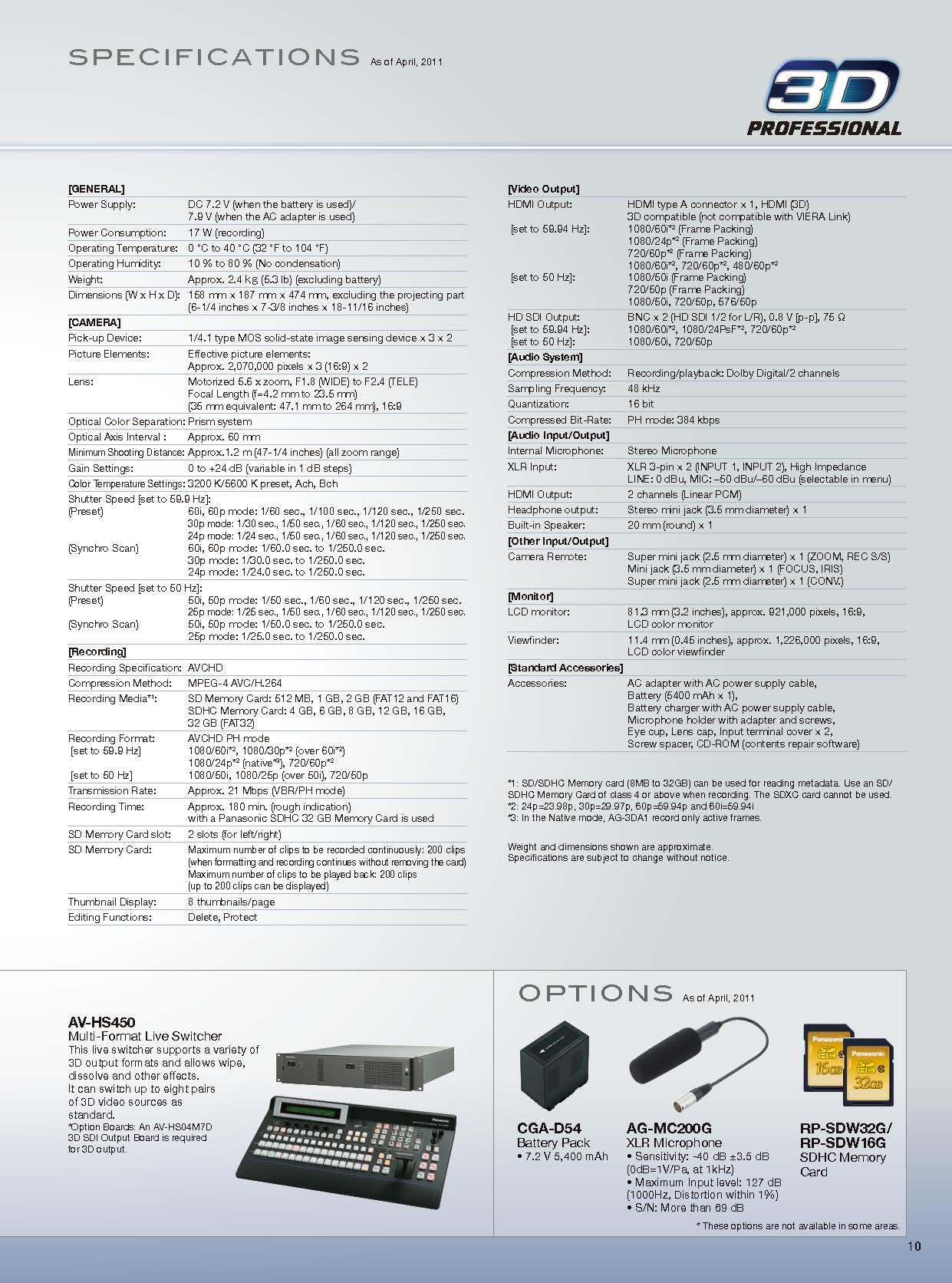 The 3DA1 is a large camera. It weighs in at around 6 lbs. with Zunow lenses attached a microphone and battery. Now with the shoulder mount, two external recorders and 12-volt battery it's about double that so around 12 lbs. There really isn't any better all in one 3D cameras that were produced. There are the two shoulder cam models: Sony TD300 and Panasonic AG-3DP1, I believe both are 10bit internal recording. The Panasonic model would appear to be better as it has a superior codec, the AVC Intra 100 vs Sony's 35mbps MPEG-2. But these models don't show up often and when they do they're very pricey. There're also very heavy. With battery they'll be around 18 lbs. I can get pretty much equal quality with the 3DA1 now with extral recording. I only lack 10bit color but I am not sure it would make much difference and my current version of Vegas Pro does not accept 10bit, AFAIK. Besides, Blu-ray still only supports 8bit for 1080p.
The 3DA1 is a large camera. It weighs in at around 6 lbs. with Zunow lenses attached a microphone and battery. Now with the shoulder mount, two external recorders and 12-volt battery it's about double that so around 12 lbs. There really isn't any better all in one 3D cameras that were produced. There are the two shoulder cam models: Sony TD300 and Panasonic AG-3DP1, I believe both are 10bit internal recording. The Panasonic model would appear to be better as it has a superior codec, the AVC Intra 100 vs Sony's 35mbps MPEG-2. But these models don't show up often and when they do they're very pricey. There're also very heavy. With battery they'll be around 18 lbs. I can get pretty much equal quality with the 3DA1 now with extral recording. I only lack 10bit color but I am not sure it would make much difference and my current version of Vegas Pro does not accept 10bit, AFAIK. Besides, Blu-ray still only supports 8bit for 1080p.
Because of its size and weight of the 3DA1 this is strickly a project camera. I don't use it as often and it's only for professional work for 3D Blu-ray projects. Yes, it's a great camera and NASA must have thought so too because they sent one up on the last shuttle mission in 2011 abord Atlantis. Unfortunately, the only 3D images from that mission I've seen have been in anaglyph.
The 3DA1 has two 2.07mp 3-chip 1/4.1 type sensors. The lenses are F1.8-2.4 which isn't that much range only 47.1mm-264mm. Again, with the Zunow kit you get approx. 28mm corrected so that opens it up a bit up close. And the F1.8 lenses are not quite as good in low-light as the Z10k's F1.5 lenses but outdoors in normal light, it won't make a difference of course. Indoors, the Z10k may actually be a better choice in some lighting conditions. The stereo base of the two lenses is a generous 60mm which is pretty close to human eye-spacing and can produce a nice deep range. Recording methods for 3D come in 1080p24, 1080i60/30 and 720p60 (also 50hz mode too for overseas) so you have a range of options depending on your project and needs. Internally, the camera records to dual SD cards (max 32GB SDHC) at 21mbps average. This is a decent recording codec. There is a limit on the number of clips because it is an older AVCHD 1.0 model so it only allows 200 clips per card, even if you don't use all the 32gb of space.
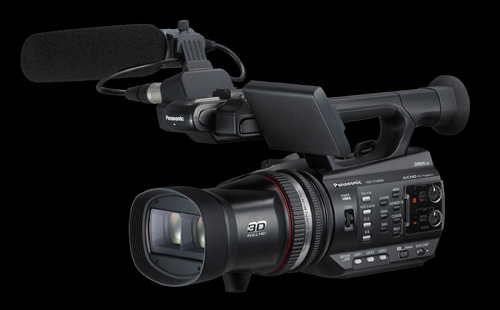
Panasonic HDC-Z10000 (2011)
Original retail price of 3,700.
Did I forget a zero in the name? Those of us who were lucky to buy this camera refer to it as the Z10K for short as the official name can be a mouthfull.
This is the camera that the 3DA1, should have been or at least with the features that the 3DA1 lacks. However, it is still not as good as the 3DA1.
The main reason is the recording method. The Z10K uses a special MVC recording codec for 3D. It's basically a single stream encoding vs. dual stream encoding like on the 3DA1 or Go Pro 3D Hero. The 3DA1 produces a left video and a right video separately. Now, while that is harder to work with than dropping a single MVC file onto timeline, the seperate streams are not as compressed. Even the 3DA1's internal recording compression is better than the Z10k's MVC compression. I have a sample comparison video on Youtube if you want to take a look. Now that is not to say that the quality of the camera is not good. It can produce decent images, but next to the 3DA1 you can see it's limits. You can record to an external recorder via HDMI and you can see the much better results that you would get if you had a higher compression method but alas, don't get too excited because that doesn't really work. You are limited to SBS (side by side) 3D via HDMI out, no full left/right frames and also you can only record in 1080i30, it's locked in that output only thru HDMI. I have tested this on my external recorders already and there's no way to get 24p out of it nor full frame packing (although I don't know what type of recorder would capture frame packing anyway). I generally only shoot in 24 frame unless it's for home video content so external recording on the Z10K is a bust for me at least. I will say though that despite not being full 3D and only SBS, the results are superior with the uncompressed HD output thru HDMI. You can see what the camera is truely capable of, had it not been constrained by the internal MVC compression. Bitrate matters more here than full resolution per eye. But there's no way I would use it converting interlaced frames to progressive plus only half resolution so it's internal recording only on this camera.
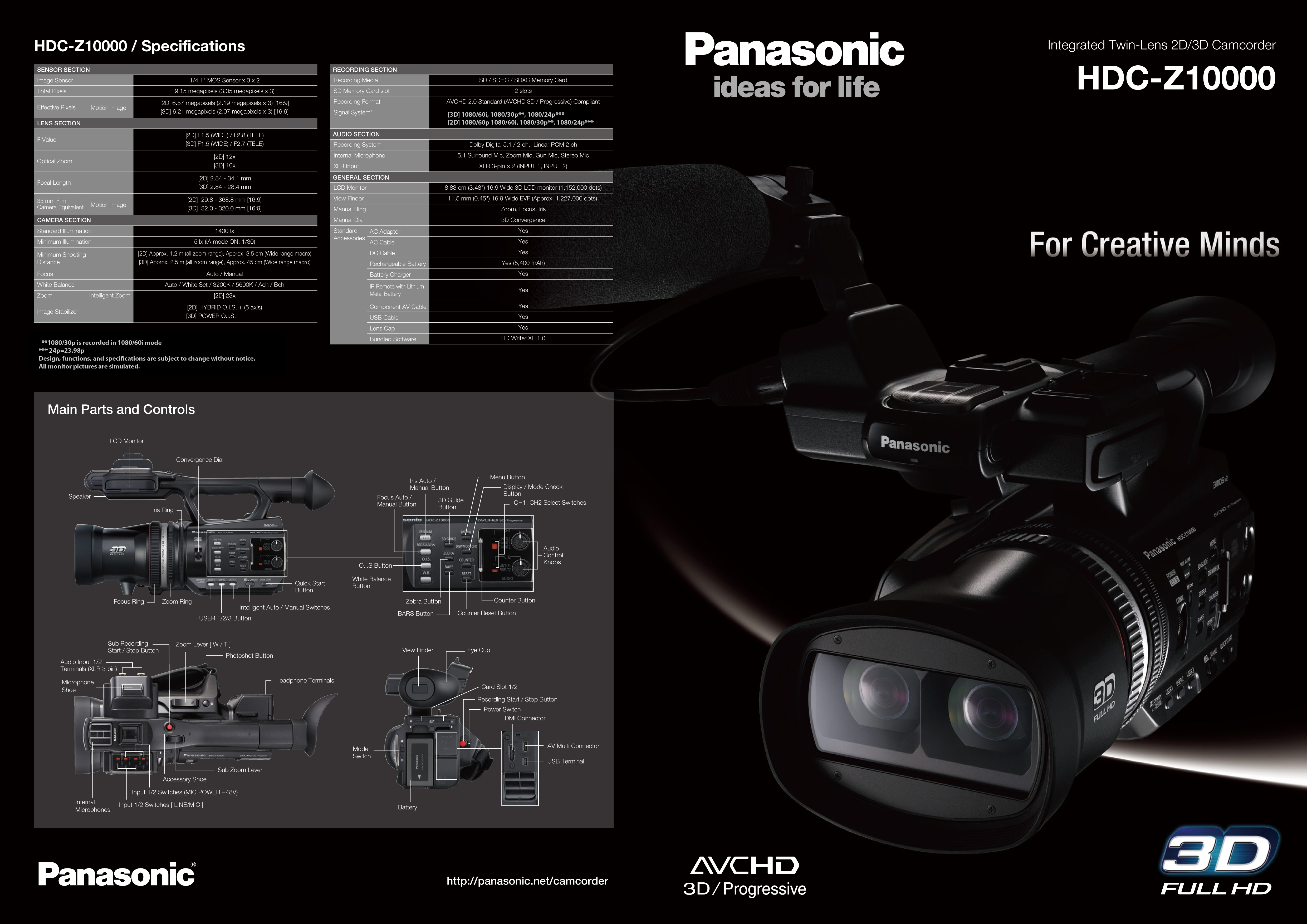
I made a cheap filter kit to convert the front plastic to glass using a large UV filter. I can then attach other filters if I need to. The Z10K comes stock with a completely useless plastic hood so you can't attach any filters to it without modifications.
Now let's talk about some of the goodies on this camera. I really wish the 3DA1 had some of these. A 3D screen for one. It has MIX mode like the 3DA1 but the lenticular screen is very nice and you can see real 3D while you shoot. This camera has auto fuctions too, pretty much everything you can think of. Also programable buttons and quick image settings. You get 1080p24, 1080i30/60 for 3D and in 2D the option of 1080p60. I really only use this camera for 3D now so those other options aren't as impressive now as they were back in 2011.
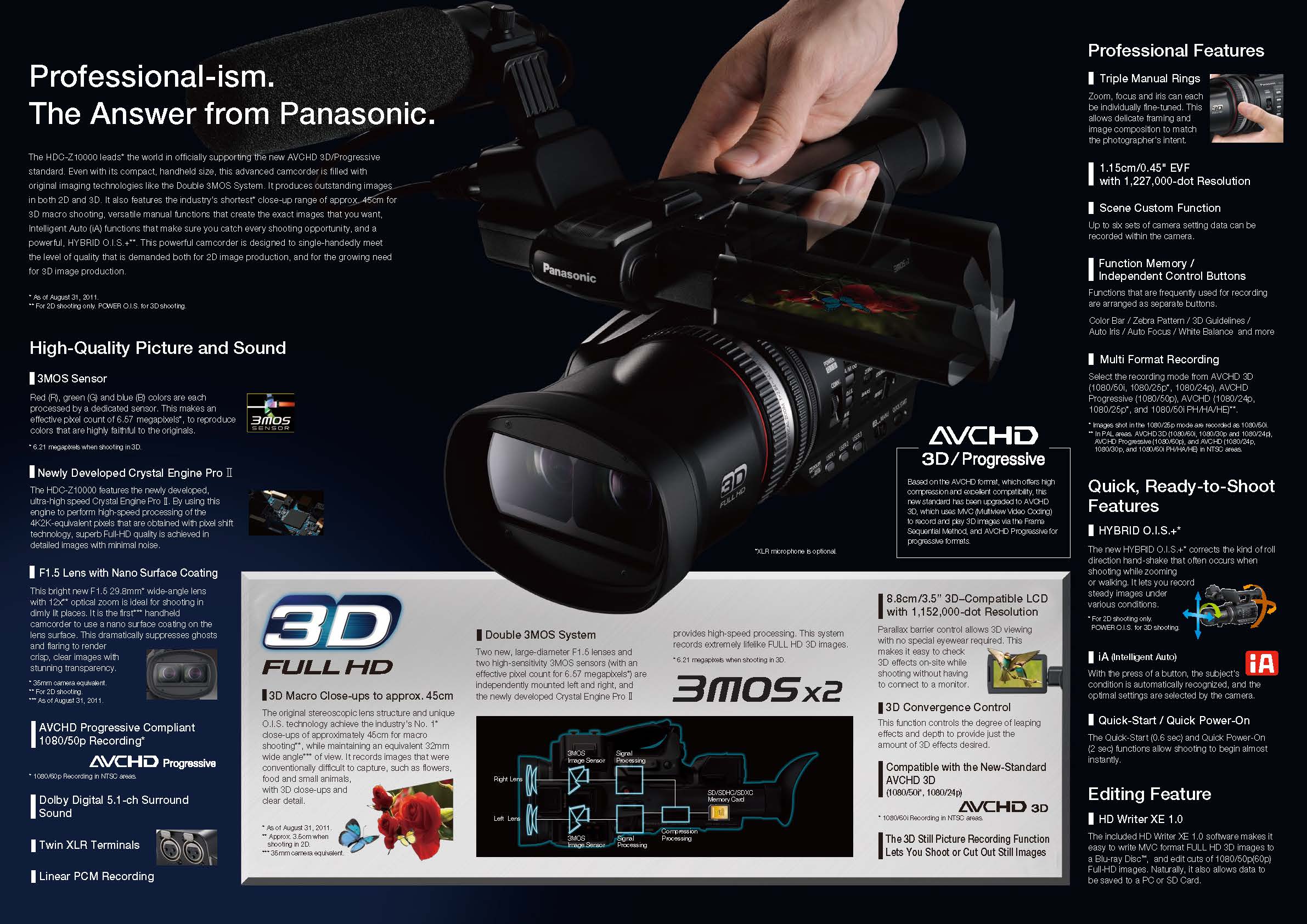
Auto iris, auto focus. You also have 3 manual rings for iris, focus and zoom. There is a wheel for adjusting the 3D convergence point too, same as the 3DA1. But on the 3DA1 the wheel is shared with iris on a toggle switch. It also has audio options. Dolby Digital 5.1, 2.0 and LPCM 2.0, so you're covered pretty well. I love using this camera, it has a nice build and finish, very professional looking camera. It's great working with it handheld with just a shoulder strap but it can work well on a tripod too. The Z10K also has image stabilization. When shooting 3D it uses a power optical image stabilixation and this will help correct shome shaking while the camera is moving.. Don't forget to turn it off when on a tripod though.
The Z10K is very similar to the 3DA1 in sensors. It also uses 1/4.1 type 3-chip 2.07mp 3MOS sensors, which is th effective pixel resolution for 3D recording of motion images. Overall, it uses a 3.05MP sensor. So there's a small crop there for usable image and also the convergence crops the sensor. If it ueses some of that unused paft of the sensor to achieve this I don't know. While it's not stated what the 3DA1's image sensor is overall, I believe it is the same 3.05 sensor with 2.07 effective pixels. It also has F1.5-F2.8 lenses (32mm-320mm), which is a nice decent range. It's pretty wide up close and has a lot of reach.
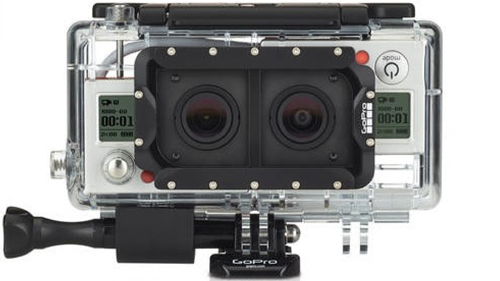
GoPro Dual Hero 3D (with Hero 3+Black Edition 2014)
Original retail price: 399 for Hero 3+ Black each. Dual Hero Case: 199.
I rounded up two sets of these last couple of years for cheap. I figured the 3D cases would be hard to find later so I bought two along with two cameras and then finally got two more cameras. I don't use them often. I just plan on using for mounted shots. I like all the different settings this camera has. My favorite is 2.7k 24p narrow which removes a lot of the fish eye for a decent wide angle. I have not shot a lot with these. I used one mounted on hood but found that it was too shaky to be used there. The 3+Black Edition is the last model to support 3D and these cases are harder to find and only work with these cameras, same with the sync cable. You don't need to worry about a wider stereo base. It has a decent stereo base for up close, medium and some decent depth overall. I list the Go Pro 3D here because it is a 3D system that shoots with 24p option as well as full frame per eye. I plan on using these more on future projects.


